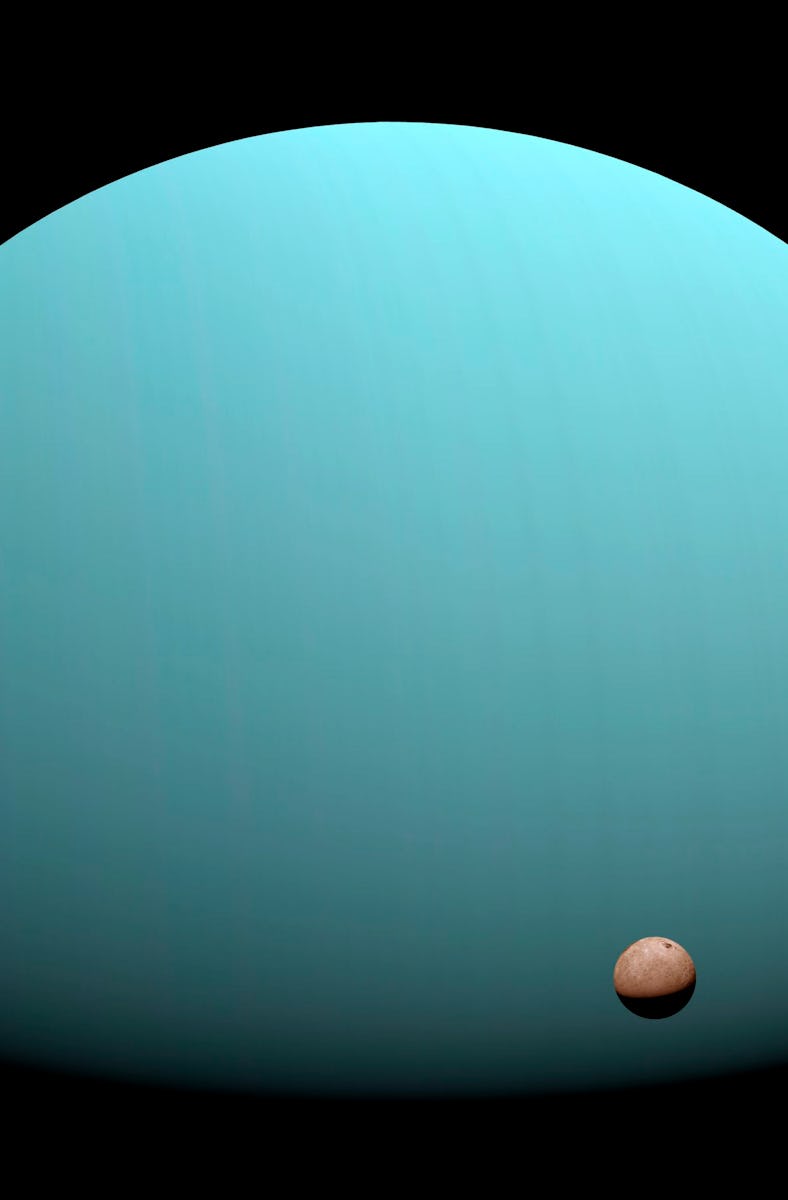Uranus Will Be Bright in the Sky This Month — Here’s How to See It
Jupiter will be there too, but that ruins the joke.

For the next couple of weeks, two of the most fascinating gas giants will shine in the night sky from dusk until dawn. Jupiter and Uranus are both directly opposite the Sun this month, and they’re also as close to Earth as they’re going to get all year.
Here’s everything you need to know about how to see Jupiter and Uranus in opposition — and what the heck that even means.
What Is Opposition?
As the planets circle the Sun in their respective orbits, Earth sometimes passes directly between the Sun and one of the outer planets. This means that the Sun and the distant planet are directly opposite each other in the sky. One positive side effect of opposition is that the sun’s rays hit opposing planets’ atmospheres at the perfect angle, making them look especially bright and sparkly.
Jupiter’s opposition is coming up first and will take place on the night of November 2 and November 3, which is also happening just one night after it passes perigee (aka its closest point to Earth). The distance and timing of perigee are always different because Earth and Jupiter are moving along their own paths around the Sun. This year Jupiter will be within 370 million miles of Earth — that’s 3 million miles farther than in 2022, which was Jupiter’s closest approach in nearly 60 years.
Next up is Uranus, which will arrive at opposition on the night of November 13 and 14. It’s also not too far from perigee, so Uranus will be “only” about 19 times farther away than the Sun (or about 1.8 billion miles).
This handy sky map from NASA shows where to look for Uranus and Jupiter.
How To See Jupiter and Uranus This Month
The really cool thing about planets in opposition is that they move across the sky directly opposite the Sun. This means that for the next few weeks, Jupiter and Uranus will rise as the sun sets, reach their highest point in the sky around midnight, and then set as the sun rises. So whether you’re an early bird, a night owl, or have given up on circadian rhythms entirely, you’ll have a chance to do some planet-spotting.
To see Jupiter, look east in the night sky between dusk and midnight. Between midnight and dawn, look west. The closer to midnight it is, the higher in the sky you should look. As always, your chances are best on a clear night and in a dark area without light pollution.
While Jupiter will be big and bright, it’s not so easy to spot Uranus, especially without the aid of a mirror and a lot of flexibility. Look for a faint blue-green point of light about halfway between Jupiter and the Pleiades star cluster. If your viewing site is very clear and very dark, you can technically spot Uranus with the unaided eye, but a telescope or a good pair of binoculars will drastically improve your chances.
Happy planet hunting!